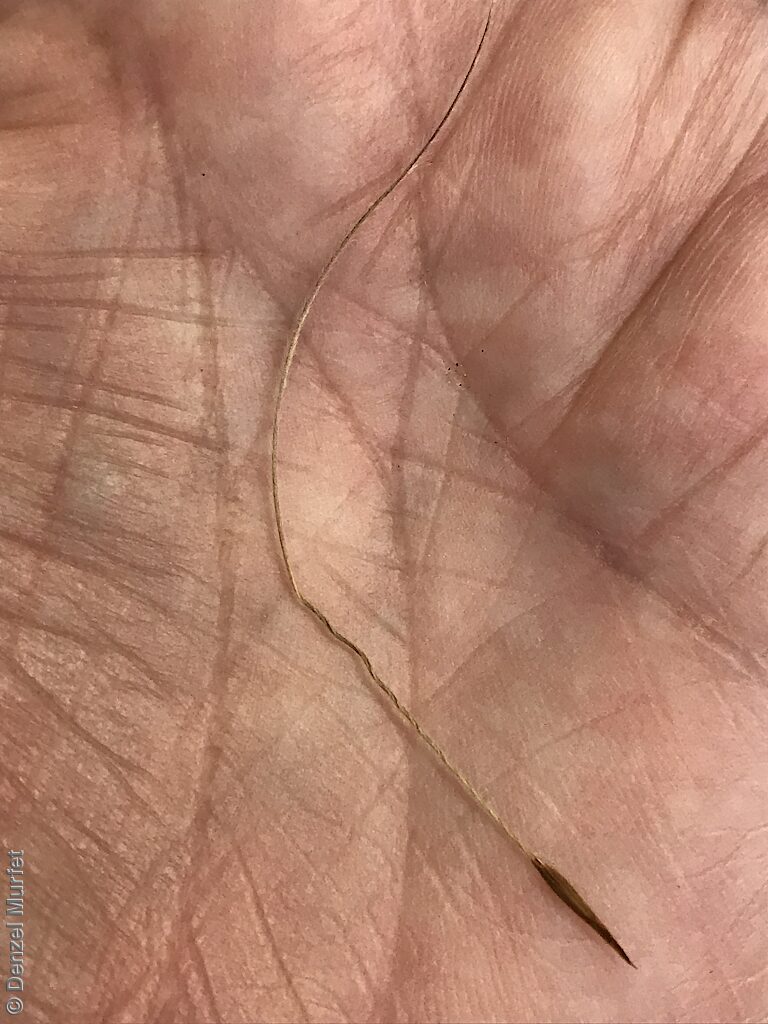
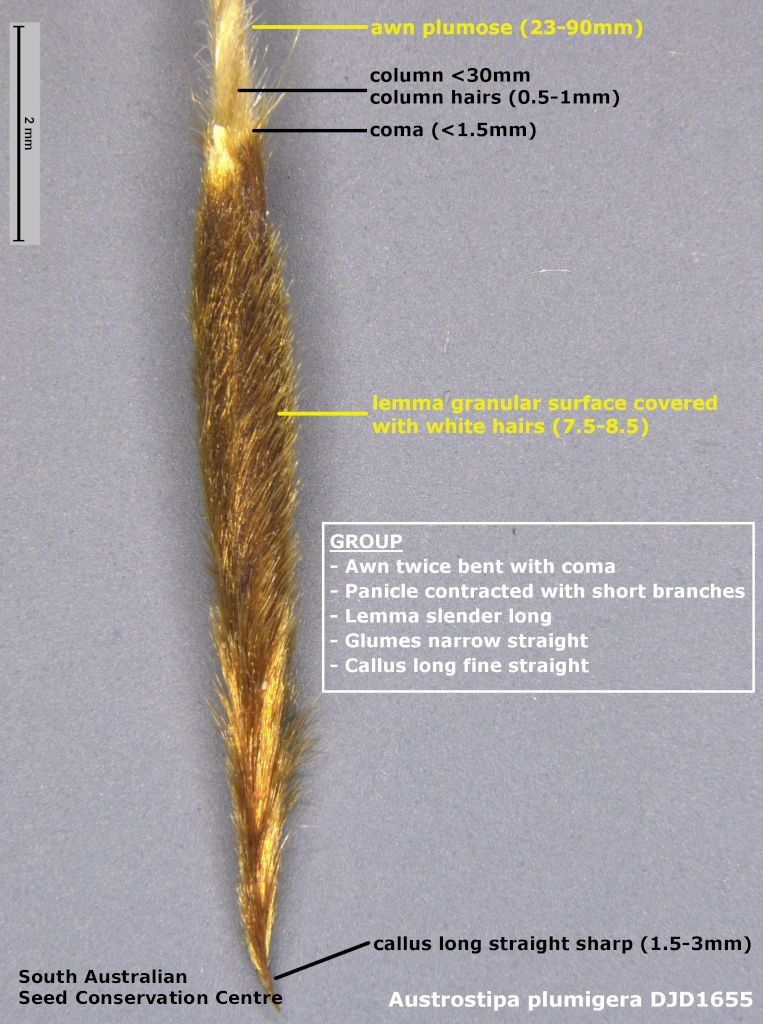
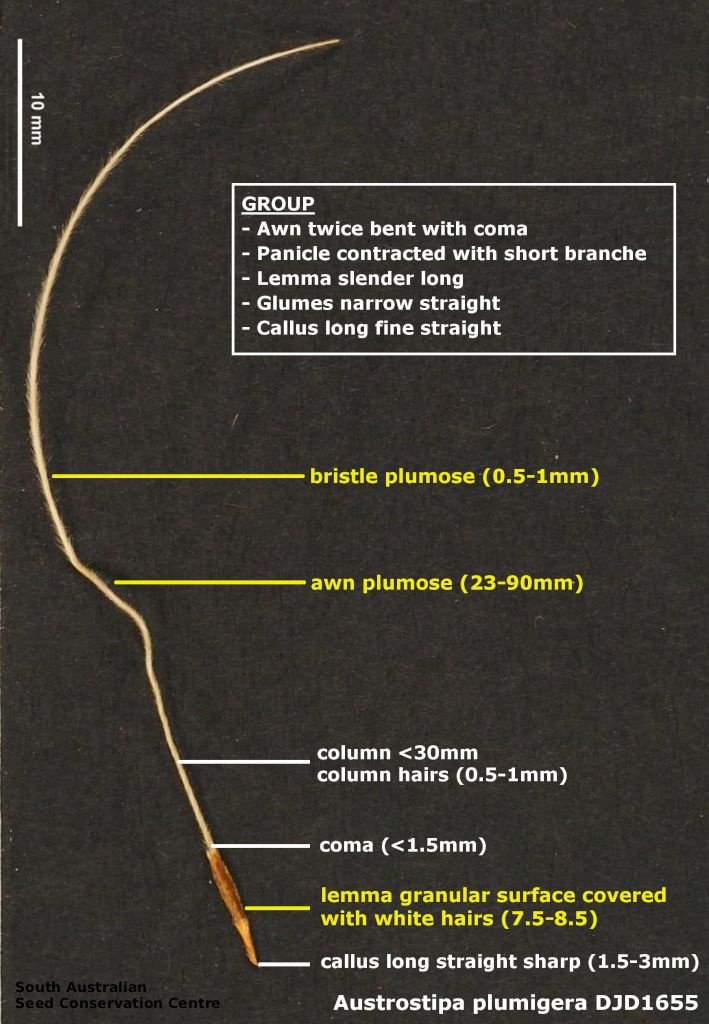
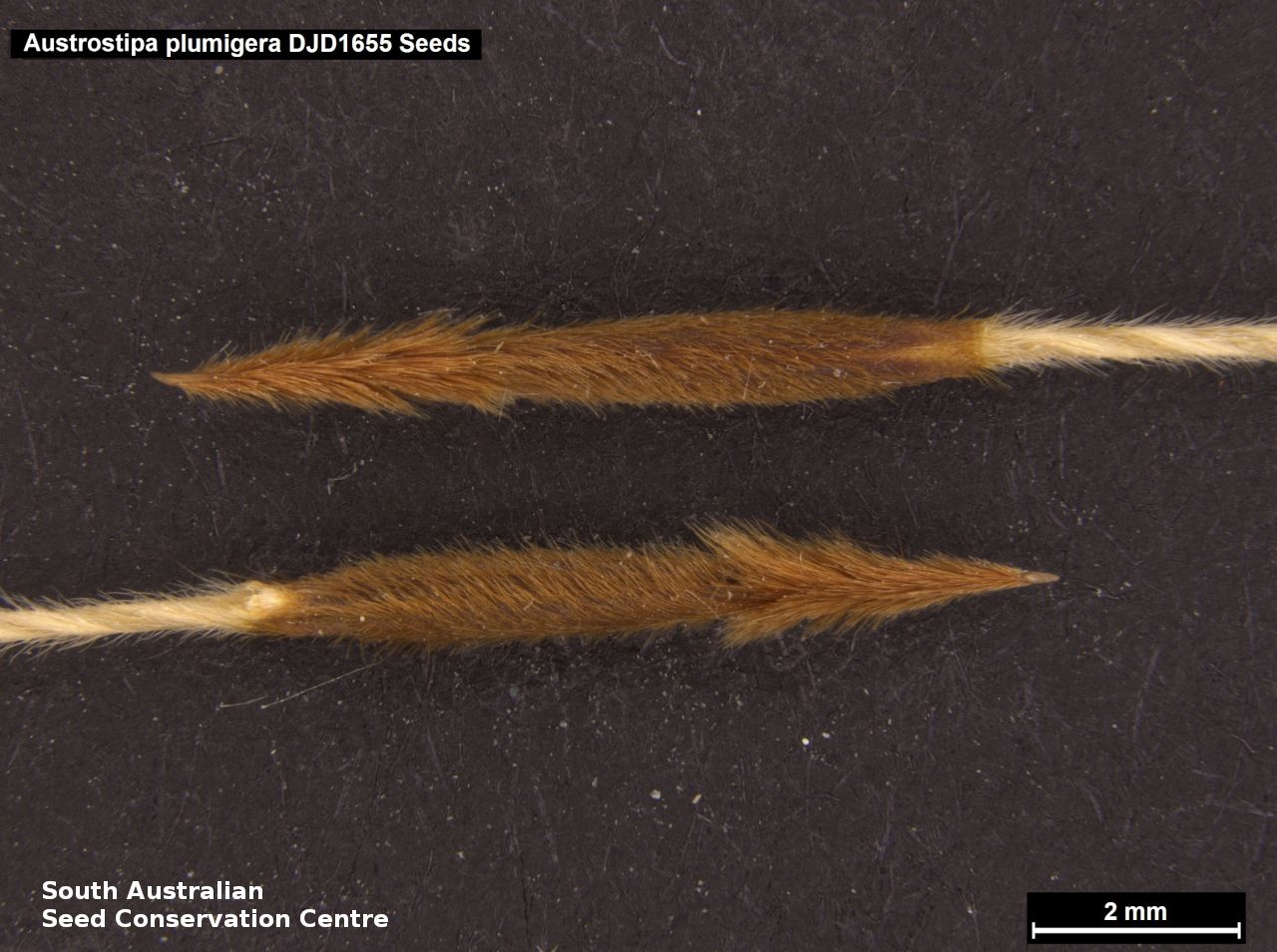
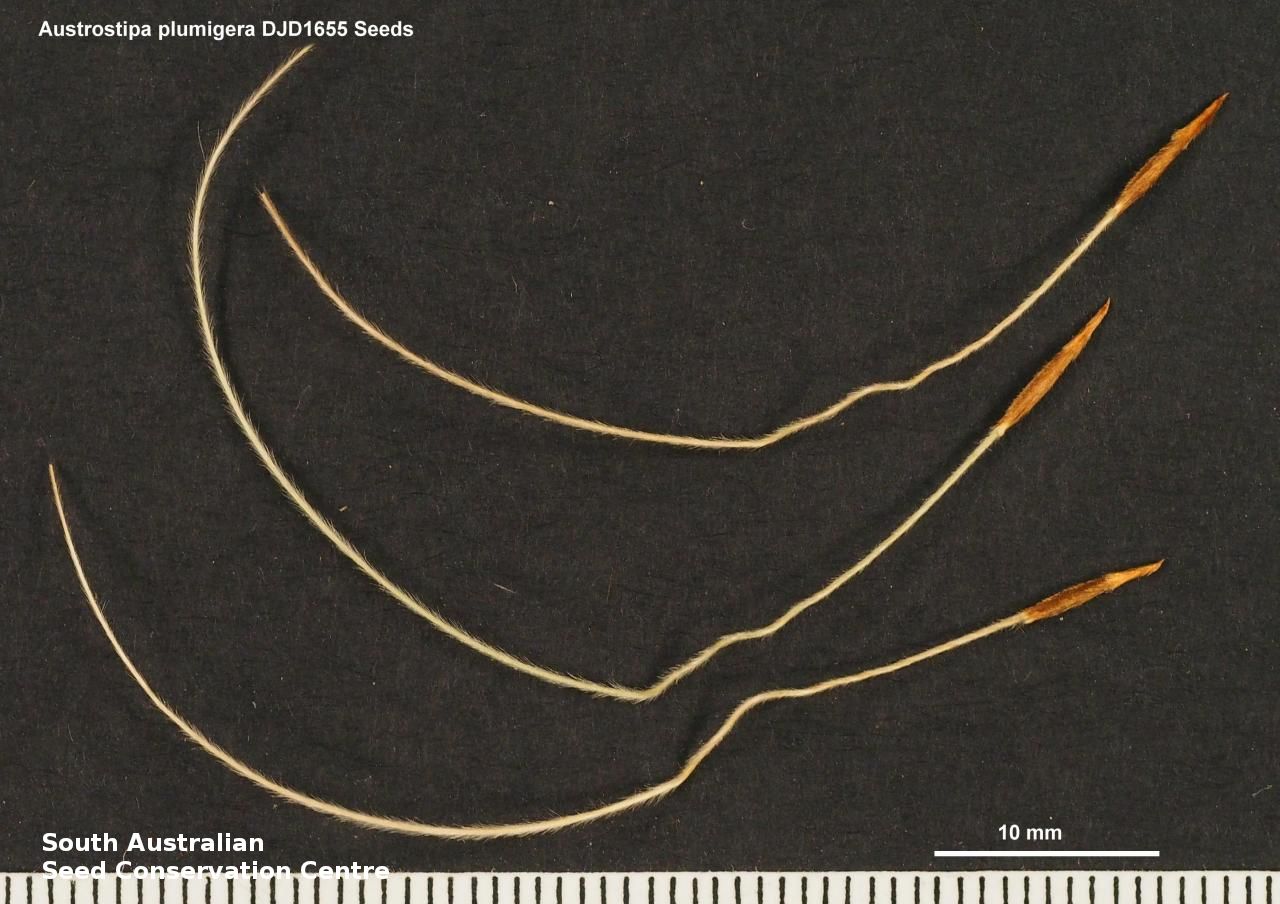
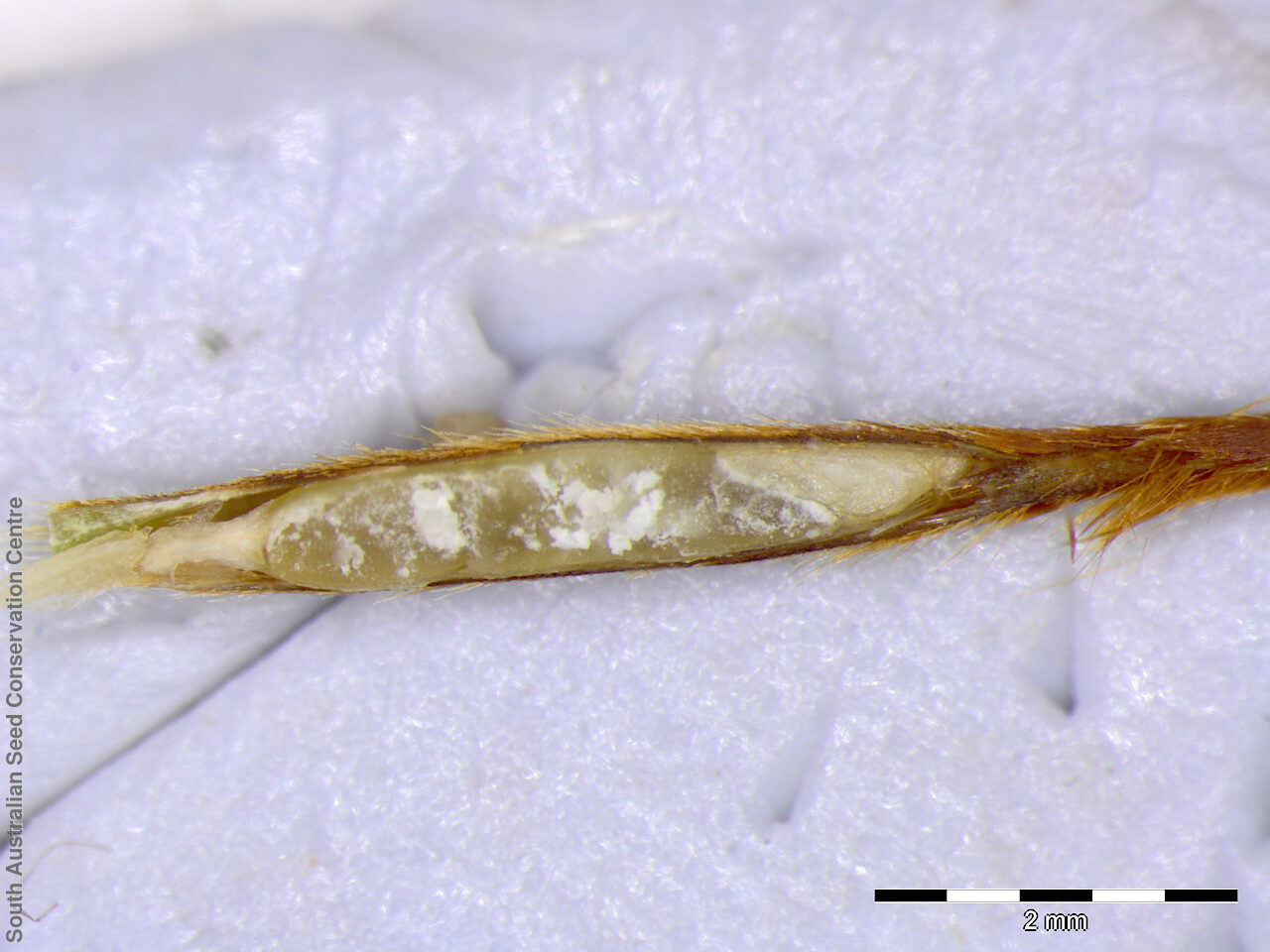
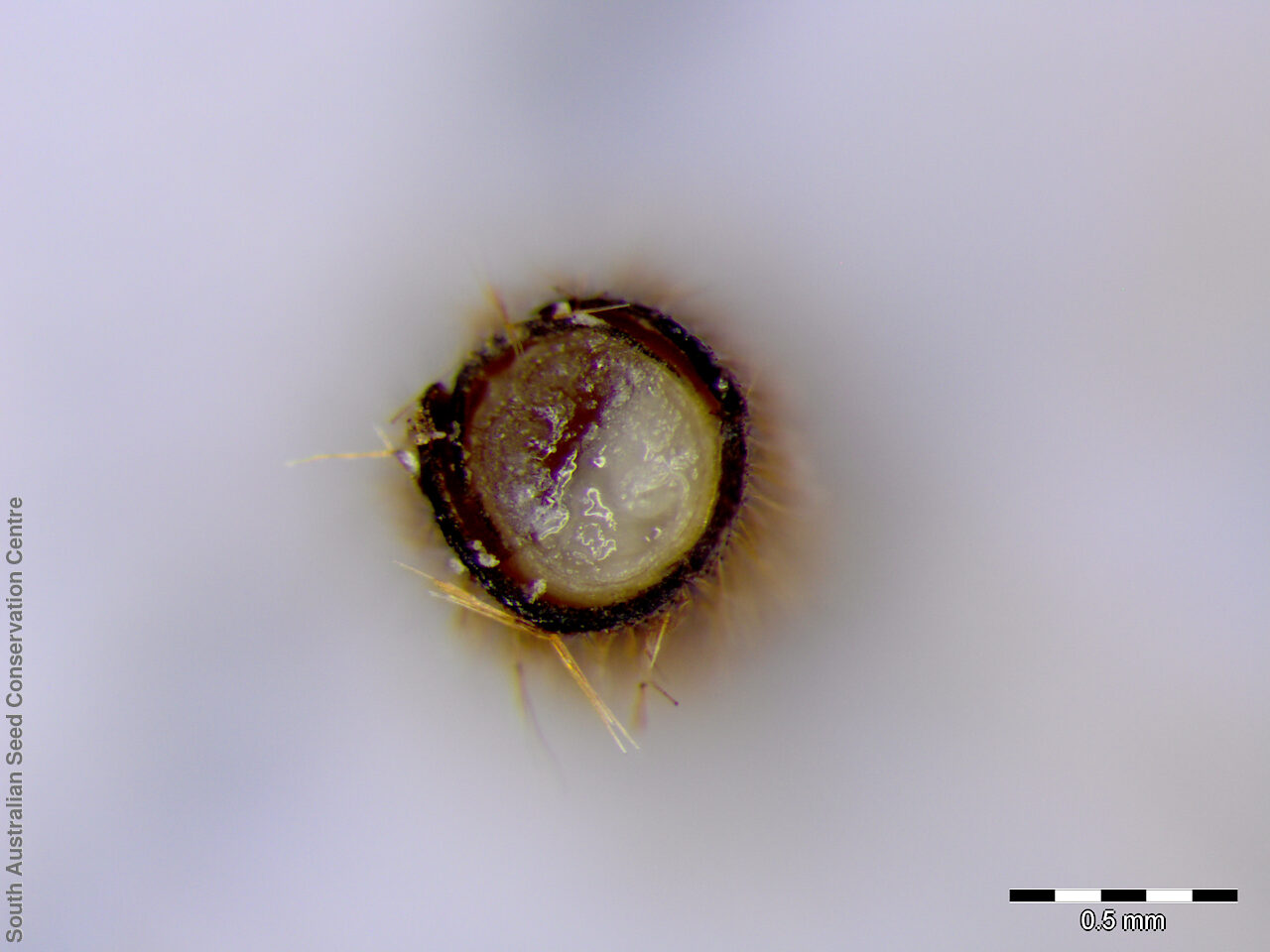

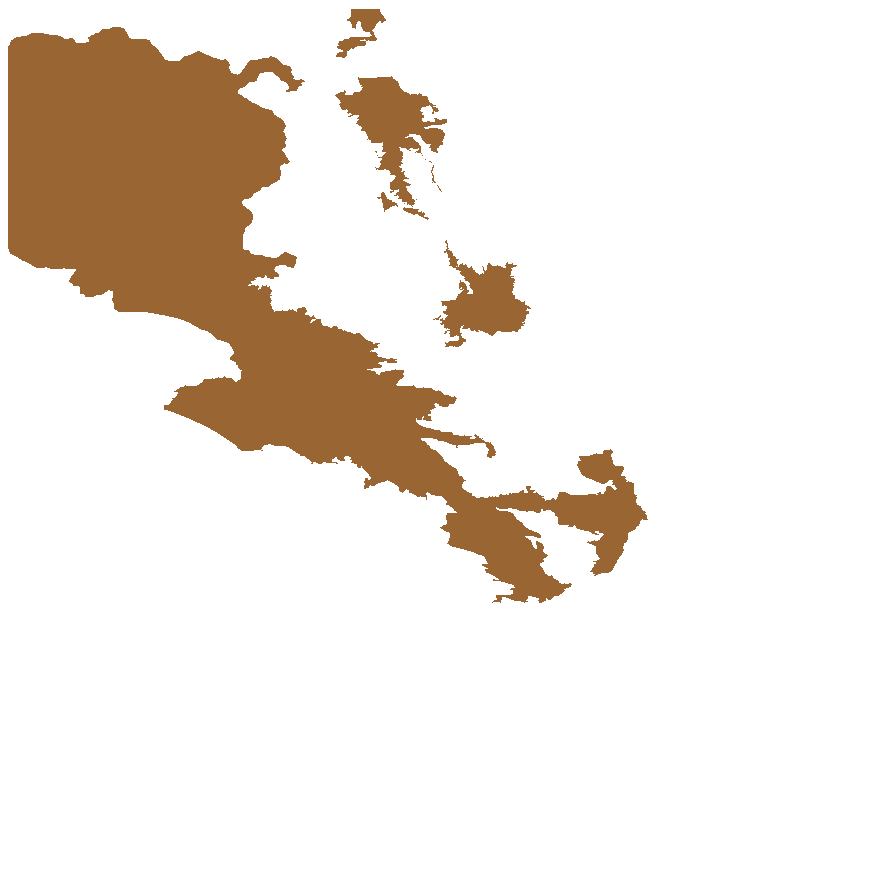
Prior names
Stipa eremophila var. dodrantaria
Stipa plumigera
Common names
Hairy-bristle Spear-grass
Etymology
Austrostipa from the Latin 'auster' meaning south and the genus Stipa, referring to the genus being allied to Stipa but restricted to Australia. Plumigera from the Latin 'pluma' meaning small, soft feather and 'gero' meaning to bear, referring to its conspicuously hairy awn bristle.
Distribution and status
Found scattered in the western region of South Australia, growing on calcrete and calcareous loams. Also found in Western Australia and the Northern Territory. Native. Rare in South Australia. Rare in the other states.
Herbarium regions: North Western, Nullarbor, Gairdner-Torrens, Eyre Peninsula
AVH map: SA distribution map (external link)
Plant description
Tufted perennial grass to 60 cm high with short rhizome; glabrous or pubescent unbranched culms with pubescent nodes. Leaves erect or flexuose, not pungent, with blades rolled or flat to 35 cm long and 3 mm wide; leaf-sheaths hairy. Inflorescence a dense panicle becoming lax and sparse, to 35 cm long; glabrous or scabrous glumes, the lower glume longer than the upper. Flowering between June to November.
Key to this species: awn twice bent with coma; panicle contracted; glumes narrow straight; callus long fine straight; awn and awn bristle plumose (0.5-1 mm) Fruits are golden-brown narrow linear-elliptic lemma to 8.5 mm long, with a granular surface texture and covered in light golden hairs; coma to 0.8 mm; callus long straight sharp to 3 mm long; awn plumose, twice bent to 90 mm long and column pubescent with hairs to 1 mm; bristle plumose with hairs to 1 mm. Seeds are yellow-brown narrow ovoid grain to 4 mm long within the lemma. Seed embryo type is lateral.
Seed collection and propagation
Collect seeds between September and December. Use your hands to gently strip the seeds (lemma) off the mature fruiting spike, those that are turning golden colour. Mature seeds will come off easily compare to the immature seeds that remain on the spike. Alternatively, you can break off the whole fruit spike to allow some of the seeds to mature further. Place the seeds/spike in a tray and leave to dry for two weeks. No further cleaning is required if only seed collected. If seed spikes collected, use hand to strip off the mature seeds. Store the seeds with a desiccant such as dried silica beads or dry rice, in an air tight container in a cool and dry place. Viability of grass seeds could be very variable, depending on time of seed collections and seasonal conditions. From one collection, the seed viability was high, at 90%.
| Location | No. of seeds (weight grams) | Number of plants | Date collected | Collection number Collection location | Date stored | % Viability | Storage temperature |
|---|---|---|---|---|---|---|---|
| BGA | 1,600 (7.03 g) | 50+ | 4-Nov-2009 | DJD1655 Nullarbor | 1-Jun-2010 | 90% | -18°C |
Number of plants: This is the number of plants from which the seeds were collected.
Collection location: The Herbarium of South Australia's region name.
% Viability: Percentage of filled healthy seeds determined by a cut test or x-ray.